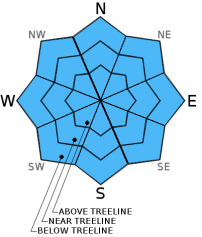| Thursday | Thursday Night | Friday | |
|---|---|---|---|
| Weather: | Sunny becoming partly cloudy during the day | Partly cloudy | Partly cloudy |
| Temperatures: | 43 to 50 deg. F. | 29 to 35 deg. F. | 39 to 46 deg. F. |
| Mid Slope Winds: | West | West | Variable |
| Wind Speed: | 10 to 15 mph with gusts to 25 mph | 10 to 15 mph with gusts to 25 mph | Light |
| Expected snowfall: | 0 | 0 | 0 |
| Thursday | Thursday Night | Friday | |
|---|---|---|---|
| Weather: | Sunny becoming partly cloudy during the day | Partly cloudy | Partly cloudy |
| Temperatures: | 40 to 47 deg. F. | 26 to 33 deg. F. | 39 to 46 deg. F. |
| Ridge Top Winds: | West | West | Northeast |
| Wind Speed: | 15 to 25 mph with gusts to 40 mph | 15 to 25 mph with gusts to 35 mph | 10 to 15 mph with gusts to 25 mph in the morning |
| Expected snowfall: | 0 | 0 | 0 |























